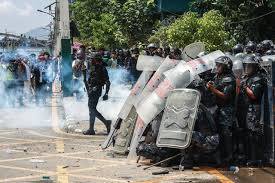When people in Nepal opened their phones last week, many were shocked to find their favorite apps—Facebook, YouTube, WhatsApp, Instagram, and X—suddenly inaccessible. The Nepal social media ban wasn’t just a minor inconvenience; it turned into one of the most heated debates the country has seen in years. What started as a government regulation move quickly spiraled into nationwide protests, tragic clashes, and, ultimately, a dramatic reversal.
Why Did Nepal Ban Social Media?
The government announced that 26 social media platforms would be blocked because they had not registered under new national rules. Officials argued that the Nepal social media ban was meant to strengthen cyber security, control fake accounts, and make platforms accountable for harmful content.
On paper, it sounded like a digital clean-up. But for millions of Nepalese, especially Gen Z users, it felt more like someone had pulled the plug on their daily lives. Social media in Nepal isn’t just about sharing memes or family photos—it’s a lifeline for communication, business, activism, and even education.
Public Backlash: When Wi-Fi Disappeared, So Did Patience

Within hours, frustration spilled onto the streets. Young people, who spend hours online every day, suddenly found themselves silenced. Students, freelancers, small businesses, and content creators—all dependent on online networks—voiced their anger.
Protesters carried signs that read: “Stop corruption, not social media.” The Nepal social media ban wasn’t just seen as a technical move, but as an attack on freedom of speech and digital rights.
The outrage highlighted just how deeply social media is woven into everyday life. For example, many Nepali entrepreneurs run Instagram shops, coordinate via WhatsApp, or promote content on YouTube. Cutting off these tools overnight was like shutting down an entire marketplace.
Escalation: From Outrage to Tragedy
What could have been resolved with dialogue escalated into one of Nepal’s most intense street movements in recent years. Protests turned violent, leading to multiple deaths and hundreds of injuries.
The government, facing massive criticism, imposed curfews and called emergency meetings. Leaders quickly realized that what was intended as a regulatory measure had sparked a national crisis. The Nepal social media ban had unintentionally created a political storm, raising serious questions about governance, freedom, and the role of digital platforms.
Government’s U-Turn: Ban Lifted, Platforms Restored
Just days after the ban was enforced, the government lifted restrictions. Access to Facebook, YouTube, WhatsApp, X, and other blocked platforms was restored. Alongside this U-turn, officials promised investigations into the violence, compensation for affected families, and medical support for those injured.
The reversal showed that in today’s digital-first world, governments cannot ignore the power of social media—and the voices it amplifies. The Nepal social media ban not only failed to control the platforms but also energized citizens to push back harder than ever before.
The Bigger Picture: Regulation vs. Freedom
The Nepal episode shines a light on a global dilemma. Governments worldwide are grappling with how to regulate tech giants without suffocating free expression. On one hand, there are legitimate concerns—fake news, cyber fraud, and data misuse are real issues. On the other, abrupt bans can feel like censorship, stripping people of their basic rights in the digital age.
In Nepal, the social media ban showed how fragile the balance is. Gen Z, digital entrepreneurs, and civil society all proved that connectivity isn’t just about fun—it’s about empowerment, economic opportunity, and a voice in the national conversation.
What’s Next for Nepal?
Now that platforms are back online, the government faces a new challenge: rebuilding trust. Regulations will still be needed, but they must be created in dialogue with citizens, businesses, and tech companies. Transparency, accountability, and respect for digital rights will be key to avoiding another crisis.
For young people in Nepal, the protests were a reminder of their collective power. For the government, it was a lesson that shutting down the internet can backfire spectacularly.
Conclusion: A Digital Generation That Won’t Be Silenced
The Nepal social media ban may have lasted only a short time, but its impact will be felt for years. It reminded everyone that social media isn’t just a luxury—it’s the heartbeat of modern life. When access is cut, it’s not just networks that go dark; voices, businesses, and entire communities are silenced.
In the end, Nepal’s story is a global one. The digital generation isn’t just online for entertainment—they are online for survival, growth, and freedom. And as Nepal has seen, trying to silence that voice can spark a louder revolution than anyone expected.
